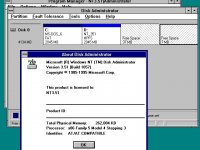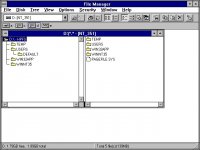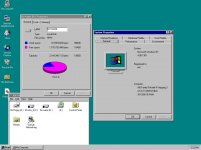All Windows NT incarnations are fully 32-bit. "NT OS/2" as it was called was designed from the ground up to be a 32-bit OS and leave 16-bit behind, unfortunately for Microsoft and IBM, nobody wanted that yet (except those who ended up embracing NT server, but I'm speaking from a client perspective).
The thing is DirectX isn't designed to be installed on any older OS than Windows 95 and Windows NT 4.0. This means that without some sort of magic I've not got up my sleeve, getting DirectX and the 3x interface to work together is much more likely to work on the NT line (other alternative is Windows 3.x, and it isn't promising, as most games wouldn't be compatible with Win32s anyway), and I'd think more likely to work on the latest NT with that interface than an earlier one - i.e., NT 3.51. It's very close to 4.0, but I'm not familiar enough with it's internals (as I am with XP and above) to do such vast modifications - in either direction. The options are to get DirectX to work on NT 3.51, or to get the NT 3.51 interface to work on NT 4.0 - either way I've not been successful.
If nobody else is interested in that topic, perhaps I'll just have to do some brute force research of their internals, but that won't be too interesting, so I was hoping someone already familiar would give it a go.. :/
Anyway I recall changing out a few files on NT 4.0 to try to get the interface to shift, and only ended up breaking the OS. Perhaps it would be easier to get a DirectX installer and run it on NT 3.51, and continue to replace 3.51 files with 4.0 files until it ran happily, and then see if games will run (StarCraft in particular is my target)?
It's a shame that it's so much work to get an NT system to run on DOSBox, as compared to a 9x one, because then I could do some of this work on my little netbook-level-power slate, as DOSBox isn't as slow as a full VM on that hardware, and with DOSBox you can mount a folder, and use the real filesystem as your filesystem, meaning file replacement is simple as pie. That means it's relegated to desktop research, most likely, and the annoying manual replacement.. Although VHD mounting could make that easier.
On another note, I tried replacing the XP-32 NTFS.SYS with one from Win7-32. For the record of our minds and searchers everywhere, it does not work. It is detected as a corrupted file and thus isn't a drop-in replacement as I hoped. There's been too many changes. Will have to look into Longhorn incarnations, maybe there's one in there with some speed improvements that's still compatible (Longhorn is a treasure trove for XP modding).
 . There's also HPFS386, also a MS developed file system, used primarily in server variants of OS/2 and IBM eventually ported their JFS to OS/2.
. There's also HPFS386, also a MS developed file system, used primarily in server variants of OS/2 and IBM eventually ported their JFS to OS/2.


